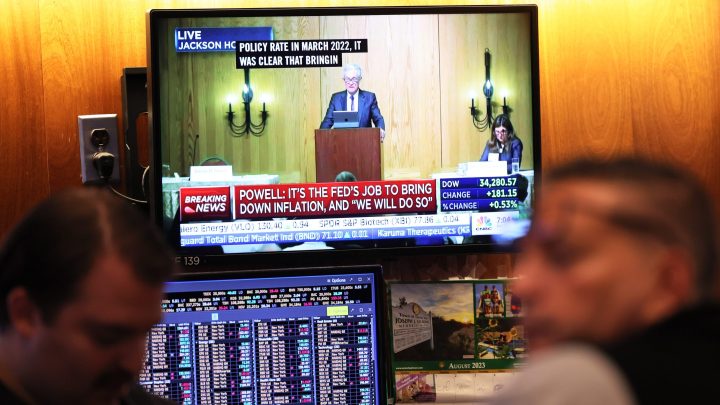
Decreasing inflation by a final percentage point may be the hardest challenge for the Fed
Decreasing inflation by a final percentage point may be the hardest challenge for the Fed

Federal Reserve Chair Jerome Powell was nothing if not clear during his Friday speech from Jackson Hole, Wyoming: Getting inflation down is still the Fed’s first and overwhelming priority. And they’re not going to rest or stop considering more rate hikes if the data dictates.
Oh, and by the way, Powell made clear yet again what exactly getting inflation down enough means: “2% is and will remain our inflation target. We are committed to achieving and sustaining a stance of monetary policy that is sufficiently restrictive to bring inflation down to that level over time,” he said. “It is challenging, of course, to know in real time when such a stance has been achieved.”
Something else that’s challenging? Actually getting there. Achieving that golden 2% is tricky, especially when it comes to not just the headline inflation measures CPI and PCE, which are both right around 3% at the latest readings, but core inflation, which is still running even higher.
The Fed has been pretty successful fighting the inflation bulge that saw the Consumer Price Index soar above 9% last summer. It’s since shrunk back to just over 3%, but trimming down to 2% could be harder, as Noah Yosif at the National Association of Federally-Insured Credit Unions explained.
“The way that I like to look at the Fed’s mission of reducing inflation is akin to losing weight,” he said. “When you first start out, there’s plenty of room for improvement. But when you’re finally close to reaching your goal, the gains become harder to come by. And this is exactly what we’re seeing with inflation.”
In the beginning, what drove inflation was energy, commodity and goods prices going up, said Nationwide economist Ben Ayers. “All in reaction to the COVID impacts and the supply chains.”
That’s mostly under control now, said Ayers. What’s still going up is housing and service prices. “Those are the parts that are harder to unwind quickly,” he said. “They would be what economists would call ‘sticky.’”
That’s because they’re dependent on having enough workers and paying them enough.
“You can’t produce 7 million new workers overnight. Same thing with the housing sector — you can’t just magically have a whole bunch of new homes,” said Ayers. “And so, because of that, we see that these factors are going to take longer to slow.”
Plus, it’s a bit of hubris to predict inflation’s path, according to Dean Baker at the Center for Economic and Policy Research.
“No one predicted the extent to which inflation would rise and the rate at which it would fall,” he said. “So anyone who tries to tell you with great confidence what the last percentage point looks like — we’re really kind of shooting in the dark.”
To return to our weight loss analogy, Fed Chair Powell is clear he’ll make the economy diet and exercise to sweat out the last bit of inflation.
Noah Yosif jokes Powell may wish for another way. “Yeah, maybe they could use some figurative Ozempic,” he said chuckling.
A fancy new drug to cure inflation? Keep on wishing.
There’s a lot happening in the world. Through it all, Marketplace is here for you.
You rely on Marketplace to break down the world’s events and tell you how it affects you in a fact-based, approachable way. We rely on your financial support to keep making that possible.
Your donation today powers the independent journalism that you rely on. For just $5/month, you can help sustain Marketplace so we can keep reporting on the things that matter to you.

















